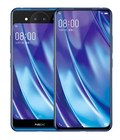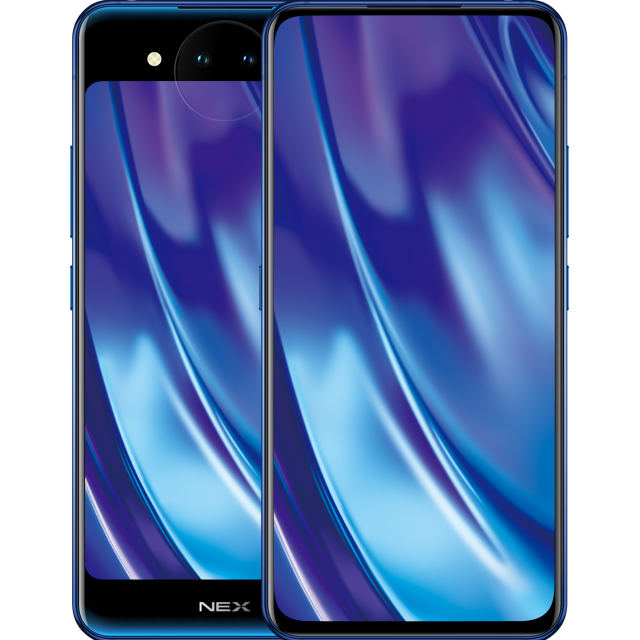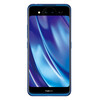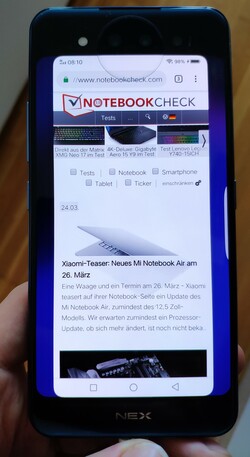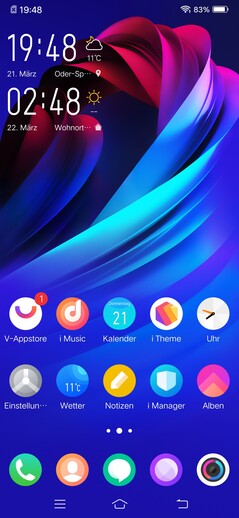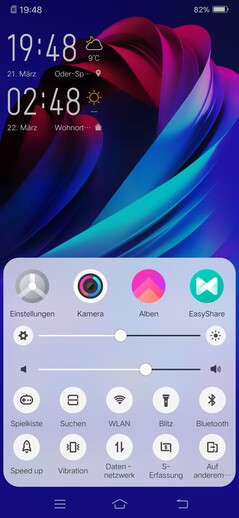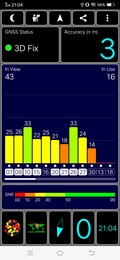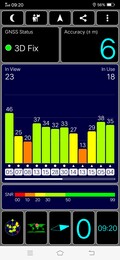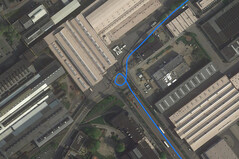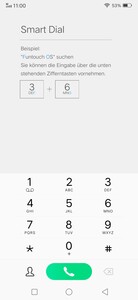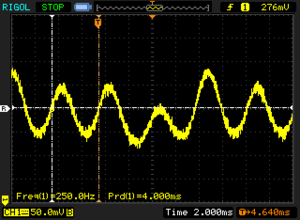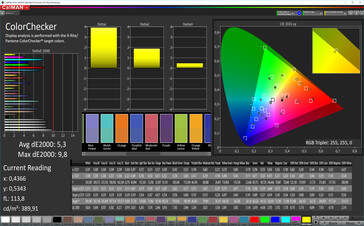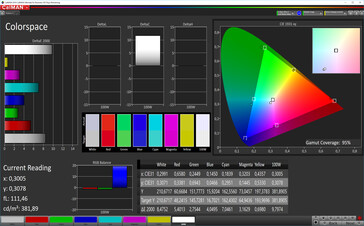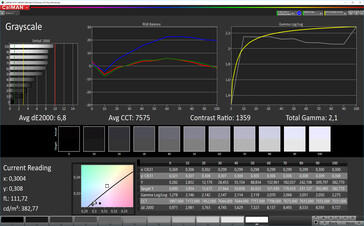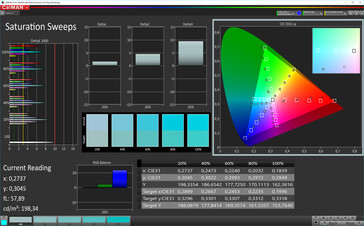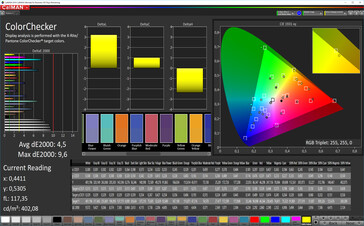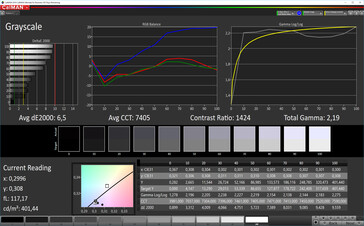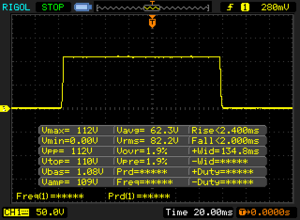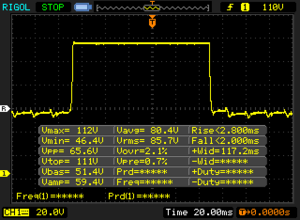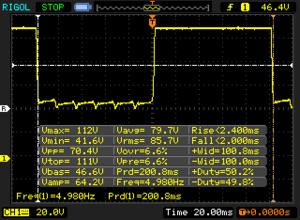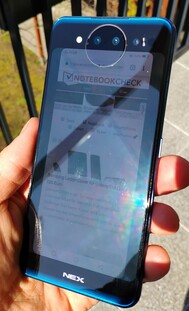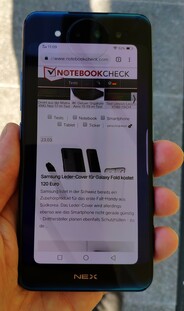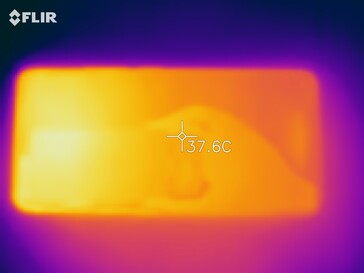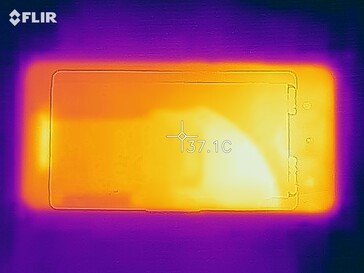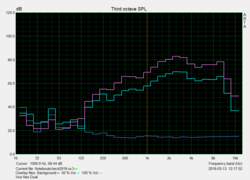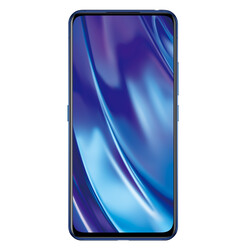Vivo NEX Dual Smartphone Review
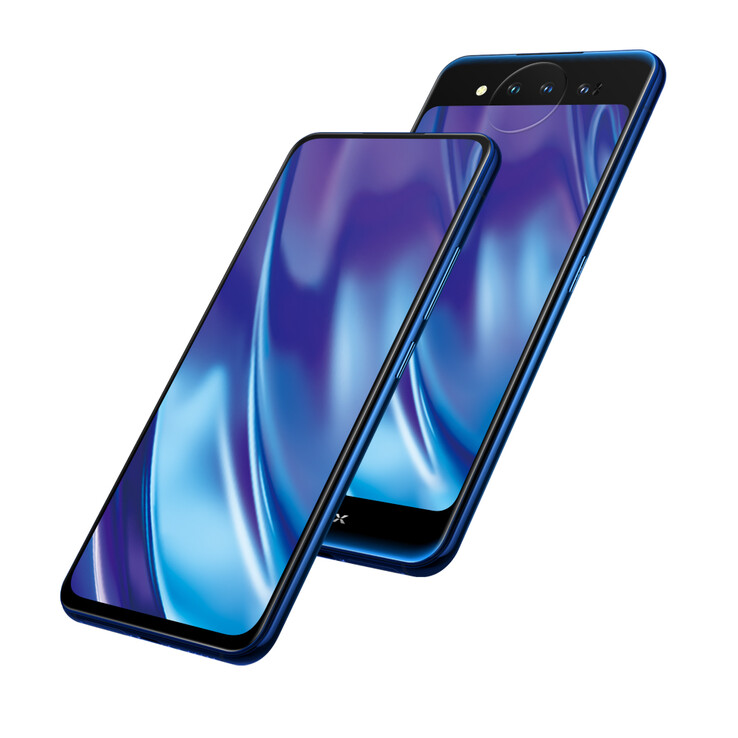
Vivo has shaken up the race to release a 100% screen-to-body ratio smartphone once again with the NEX Dual. While the market has moved towards mechanical sliders such as the Xiaomi Mi Mix 3 and Lenovo Z5 Pro or motorised elements such as the Oppo Find X, Vivo has created a phone with two displays. While devices such as the YotaPhone have offered similar concepts, Vivo has equipped the NEX Dual with two AMOLED panels rather than an E Ink display. The main display measures 6.39-inches and takes up almost all the front of the device save for a small chin because the NEX Dual has only what would traditionally be rear-facing cameras. Thus, no notch. The 5.49-inch rear display sits below the cameras and the associated sensors, allowing you to take a selfie by just flipping the phone around. Vivo has equipped the device with a 12 MP primary camera and a 2 MP secondary sensor along with a 12 MP time of flight (ToF) sensor that measures the time it takes for light to bounce between each camera pixel and the photographed object to create a 3D profile. Theoretically, the ToF sensor should add more depth to photos than traditional sensors could.
The NEX Dual is powered by a Qualcomm Snapdragon 845 SoC and a whopping 10 GB of RAM. The SoC may be one of last year’s flagship chips, but it should still be powerful enough for even the most complex applications and games.
The NEX Dual currently retails for approximately €630 (~$709) but is only available through import companies, about which we will discuss more in the Accessories & Warranty section of this review.
We have chosen to compare the NEX Dual against comparably priced flagship smartphones. Our comparison devices will include the Honor View 20, the LG V40 ThinQ, the Xiaomi Mi Mix 3 and the ZTE Axon 9 Pro. We will also compare the NEX Dual against the Samsung Galaxy S10, although the latter is considerably more expensive than our review unit.
Case
Vivo has covered the NEX Dual in Gorilla Glass 5, which sandwiches a metal frame. The device measures 157 x 75 mm (~6.2 x 3 in) and has what looks like an almost all-screen front. However, the NEX Dual has thicker bezels than the Galaxy S10 that result in an 84.7% screen-to-body ratio. By contrast, the Galaxy S10 has an 88.3% ratio, while even devices with a notch such as the OnePlus 6T have higher ratios than the NEX Dual.
Nonetheless, our review unit sits well in our hands and is only 8.1 mm (~0.32 in), which is on par with our comparison devices. However, its flat design makes the NEX Dual slipperier than we would have liked. The device does not sit completely flat on a desk or table either because of its rear-facing camera ring that protrudes slightly from the back case. The ring doubles as a notification or camera light, which is novel.
Vivo currently sells the NEX Dual in blue and purple, which the company markets as Ice Field Blue and Star Purple respectively.
Connectivity
Vivo has equipped the NEX Dual with 128 GB of UFS 2.1 flash storage, of which around 112 GB is available upon first booting the device. The device does not support microSD cards, but it has dual-SIM functionality thanks to its two nano-SIM card slots.
The NEX Dual has a 3,500 mAh battery too that charges via the USB 2.0 Type-C port on the underside of the device. The Type-C port does not support USB On-The-Go (OTG) so you cannot connect wired peripherals such as a keyboard or mouse. There is no wireless charging functionality either.
Moreover, the NEX Dual cannot stream HD content from services such as Amazon Prime Video or Netflix. Devices must be DRM Widevine Level 1 certified to be able to do so, but Vivo has only attained Level 3 certification for the device, meaning that you will be stuck streaming in standard definition instead. Frustratingly, Vivo cannot fix this via a software update, so there is no chance of your NEX Dual even being able to stream DRM protected in HD. You can wirelessly transmit audio and video to an external monitor with Miracast though, as most modern smartphones can do.
Software
Vivo ships the NEX Dual with Android 9.0 Pie atop of which it adds its Funtouch custom UI. Our review unit had February 2019 security patches installed at the time of testing, which were only one month old at that point.
Our review unit had version 4.5 of Funtouch OS installed at the time of writing, which is heavily customised and has numerous customisation options that stock Android lacks. The UI is more reminiscent of iOS than it is of Android such as the placement of the Quick Settings menu, which rises from the bottom of the screen like iOS rather than from the top as with most versions of Android.
We should also point out that Funtouch OS currently only displays third-party apps in 19.5:9 regardless of the screen that you are using. While this is not an issue for the main display, the rear screen has a 16:9 aspect ratio, which makes content look smaller than it should do.
Much of Funtouch OS also remains untranslated. Although the NEX Dual ships with a multi-language ROM, many UI elements remain in Chinese regardless of the language to which the system is set. We currently have no workaround for this other than installing a third-party launcher, which may have scaling issues with the secondary display.
Additionally, Funtouch has no Google apps pre-installed, with Vivo opting for Chinese equivalents instead. Hence, you cannot download apps from the Play Store or use anything that requires Google Play Services. Fear not, as we have written a guide on how to install Google applications on Chinese ROMs, although it is currently only available in German.
Communication & GPS
The NEX Dual supports all modern Wi-Fi standards up to IEEE 802.11 ac and can connect to 2.4 GHz or 5 GHz networks. Vivo has also equipped the device with a 2x2 MIMO antenna that allows it to achieve fast transfer speeds. Our review unit averaged over 550 MBit/s in both iperf3 Client Wi-Fi tests that we ran when connected to our Linksys EA8500 reference router. These speeds are well above average, but they are slower than what the Axon 9 Pro, Galaxy S10 and Mi Mix 3 averaged in the same tests. Our review unit also achieved a -45 dBm attenuation when placed next to and connected to our Telekom Speedport W921V router, which is worse than we would have expected from a device at this price.
The NEX Dual supports LTE Cat.16 on both SIM cards and supports 19 LTE bands for near worldwide connectivity. Please keep in mind that the device does not support Band 28 though, which some carriers in Asia, Latin America, Oceania, Finland, France, Kenya and Nigeria use for LTE.
The device also has an NFC chip for use with services such as Google Pay, once you have installed the requisite Google apps. The Wi-Fi module also supports Bluetooth 5.0.
| Networking | |
| iperf3 transmit AX12 | |
| Xiaomi Mi Mix 3 | |
| ZTE Axon 9 Pro | |
| Samsung Galaxy S10 | |
| Vivo Nex Dual Display | |
| LG V40 ThinQ | |
| Honor View 20 | |
| iperf3 receive AX12 | |
| Xiaomi Mi Mix 3 | |
| LG V40 ThinQ | |
| ZTE Axon 9 Pro | |
| Samsung Galaxy S10 | |
| Vivo Nex Dual Display | |
| Honor View 20 | |
The NEX Dual uses BeiDou, Galileo and GLONASS, GPS and SBAS for location services. Our review unit found a satellite fix with up to 6 metres (~17 ft) accuracy indoors after a few seconds, which narrowed to 3 metres (~10 ft) when we stepped outside.
We also subjected our review unit to a bike ride to compare its location accuracy against the Xiaomi Mi 9. We would usually use a Garmin Edge 500 or 520, but we were unable to use either at the time of testing. However, the Mi 9 is a good reference device because it supports the more accurate dual-GPS. Our review unit deviated by around 40 metres (~131 ft) over the 6.86 km (~4.3 mi) course that the Mi 9 plotted, with both devices recording roughly the same route. Hence, the NEX Dual is accurate enough for all general navigation tasks.
Telephone Features & Call Quality
Our review unit has decent call quality, and we experienced no disturbing dropouts or reception problems during our tests. The microphone picked out our voice well too, while our call partner remained intelligible throughout. In short, you should have no issues with making or receiving calls using the NEX Dual.
The device does not support Wi-Fi calls (VoWiFi), although it does have voice over LTE (VoLTE) functionality that should work in China. Unfortunately, VoLTE only works if your carrier provisions your device on its network, which is unlikely to be the case with the NEX Dual.
Cameras
Vivo has equipped the NEX Dual with a 12 MP Sony IMX363 CMOS sensor that is supported by a 2 MP depth of field sensor, which can help create bokeh effect photos. The NEX Dual has a 3D TOF sensor for use with augmented reality (AR) applications among other things. The main camera can record videos in up to UHD resolution at 30 FPS, but the maximum resolution in which you can shoot at 60 FPS is just 720p, which is disappointing.
The NEX Dual can take decent photos in good ambient light that are mostly free from focusing issues thanks to its dual-pixel autofocus and 4-axis optically stabilised (OIS) sensor. The main camera’s f/1.8 aperture should be wide enough to photograph scenes well in low light too, but our review unit captured far fewer details than the V40 ThinQ and View 20 managed, as demonstrated by scene 3. Image noise also dominates the photo, and it is noticeably underexposed compared to the picture taken with the V40 ThinQ.
However, while the cameras are below par as rear-facing sensors, they take more detailed selfies than any other flagship that we have tested so far. In short, the NEX Dual is an excellent smartphone for selfie takers.
Accessories & Warranty
The NEX Dual comes with a modular 22.5-W charger (10 V/2.25 A), a matching USB cable along with a silicone case and some headphones.
TradingShenzhen, which kindly provided us with our review unit, also include an EU adapter. This is not part of the standard delivery though, so your experience may vary if you buy the device elsewhere.
The NEX Dual comes with 12 months manufacturer’s warranty. However, this typically involves a lengthy returns process to China, so TradingShenzhen has a German shipping address to which you can send your device if you need to make a warranty claim.
Please see our Guarantees, Return Policies & Warranties FAQ for country-specific information.
Input Devices & Operation
The NEX Dual has a 10-point capacitive touchscreen that precisely and quickly reproduced our inputs onscreen throughout testing. The glass covering both displays has a smooth finish that is easy on which to perform multi-finger or swiping gestures.
The device also has the traditional three navigation button array that most Android smartphones have. However, Vivo has included gesture controls that function like those on iOS or One UI do. The company pre-installs its version of the Sogou Pinyin keyboard, but you could replace this with another keyboard if you wish.
Vivo has equipped the NEX Dual with an in-screen fingerprint sensor too, which worked accurately throughout our tests and unlocked our review unit quickly. Nevertheless, it is slower and more inaccurate than a traditional sensor that you would usually find on the back of a device. Likewise, while the NEX Display also uses its ToF camera for 3D facial authentication, you must turn the device around to unlock it before switching back to the main display again. The face unlock works reliably even in the dark, which is good, but the process is unnecessarily arduous in daily use. Hence, a fingerprint, password, pattern or PIN are easier to use.
Display
Both displays operate natively at 1080p, although the main screen has a slightly higher pixel density at 403 PPI compared to the rear display’s 401 PPI. The main display has a marginally higher resolution too, because of its taller aspect ratio. Subjectively, both displays look just as sharp as each other, and we noticed no individual pixels throughout our tests.
The main display achieved an average maximum brightness of 632 cd/m², according to X-Rite i1Pro 2 and is 92% evenly lit. This is only with the ambient light sensor activated though. Switching to manual brightness reduces the average maximum luminosity to 414 cd/m². By contrast, the more realistic APL50 (Average Picture Level) test, which measures brightness by evenly distributing light and dark areas across a display, records our review unit as having a maximum luminosity of 771 cd/m² with the ambient light sensor activated.
By contrast, the rear display only achieved an average maximum brightness of 414 cd/m² in X-Rite i1Pro 2 and 482 cd/m² in APL50.
Please keep in mind that both displays use pulse-width modulation to regulate their brightness as OLED panels do not have a dedicated backlight like LCD or IPS panels do. The displays flicker at around 250 Hz at 99% brightness and below, which is rather low. We did not notice any flickering during our tests, but the NEX Dual could cause eye strain or headaches for those who are PWM sensitive.
| |||||||||||||||||||||||||
Brightness Distribution: 92 %
Center on Battery: 586 cd/m²
Contrast: ∞:1 (Black: 0 cd/m²)
ΔE ColorChecker Calman: 5.3 | ∀{0.5-29.43 Ø4.78}
ΔE Greyscale Calman: 6.8 | ∀{0.09-98 Ø5}
Gamma: 2.1
CCT: 7575 K
| |||||||||||||||||||||||||
Brightness Distribution: 95 %
Center on Battery: 399 cd/m²
Contrast: ∞:1 (Black: 0 cd/m²)
ΔE ColorChecker Calman: 4.5 | ∀{0.5-29.43 Ø4.78}
ΔE Greyscale Calman: 6.5 | ∀{0.09-98 Ø5}
Gamma: 2.19
CCT: 7405 K
| Vivo Nex Dual Display Super AMOLED, 2340x1080, 6.4" | Xiaomi Mi Mix 3 OLED, 2340x1080, 6.4" | LG V40 ThinQ OLED, 3120x1440, 6.4" | Samsung Galaxy S10 OLED, 3040x1440, 6.1" | Honor View 20 LTPS, 2310x1080, 6.4" | ZTE Axon 9 Pro AMOLED, 2248x1080, 6.2" | |
|---|---|---|---|---|---|---|
| Screen | 51% | 37% | 41% | 31% | 33% | |
| Brightness middle (cd/m²) | 399 | 599 50% | 567 42% | 701 76% | 492 23% | 521 31% |
| Brightness (cd/m²) | 404 | 593 47% | 559 38% | 705 75% | 475 18% | 517 28% |
| Brightness Distribution (%) | 95 | 96 1% | 89 -6% | 98 3% | 94 -1% | 96 1% |
| Black Level * (cd/m²) | 0.4 | |||||
| Colorchecker dE 2000 * | 4.5 | 1.4 69% | 3.3 27% | 3.7 18% | 2.4 47% | 2.9 36% |
| Colorchecker dE 2000 max. * | 9.6 | 3.2 67% | 6.1 36% | 10.3 -7% | 5.2 46% | 5.5 43% |
| Greyscale dE 2000 * | 6.5 | 2 69% | 1.1 83% | 1.4 78% | 3.2 51% | 2.7 58% |
| Gamma | 2.19 100% | 2.25 98% | 2.46 89% | 2.1 105% | 2.06 107% | 2.01 109% |
| CCT | 7405 88% | 6496 100% | 6495 100% | 6553 99% | 7125 91% | 6288 103% |
| Contrast (:1) | 1230 |
* ... smaller is better
Screen Flickering / PWM (Pulse-Width Modulation)
| Screen flickering / PWM detected | 240.4 Hz | ≤ 99 % brightness setting | |
The display backlight flickers at 240.4 Hz (worst case, e.g., utilizing PWM) Flickering detected at a brightness setting of 99 % and below. There should be no flickering or PWM above this brightness setting. The frequency of 240.4 Hz is relatively low, so sensitive users will likely notice flickering and experience eyestrain at the stated brightness setting and below. In comparison: 53 % of all tested devices do not use PWM to dim the display. If PWM was detected, an average of 8118 (minimum: 5 - maximum: 343500) Hz was measured. | |||
| Screen flickering / PWM detected | 250 Hz | ≤ 99 % brightness setting | |
The display backlight flickers at 250 Hz (worst case, e.g., utilizing PWM) Flickering detected at a brightness setting of 99 % and below. There should be no flickering or PWM above this brightness setting. The frequency of 250 Hz is relatively low, so sensitive users will likely notice flickering and experience eyestrain at the stated brightness setting and below. In comparison: 53 % of all tested devices do not use PWM to dim the display. If PWM was detected, an average of 8118 (minimum: 5 - maximum: 343500) Hz was measured. | |||
The lack of backlight allows OLED panels to individually switch off pixels to create absolute blacks. IPS panels cannot do this, which is why black images will shine brightly in a darkened room on an IPS panel but not with an OLED panel. The ability to create absolute blacks also helps the NEX Dual have a theoretically infinite contrast ratio, so colours should look more vivid than they would on an IPS panel. Most of our comparison devices also have OLED panels though, so the NEX Dual has no advantage in this regard.
Both displays look colour accurate in daily use, but our photo spectrometer and CalMAN analysis software tell a different story. Ideally, a display would have a colour temperature of 6,500 K, but both displays are closer to 7,500 K, which looks rather cool. Likewise, greyscale and colour deviations are considerably higher than the ideal value of 3.
Display Response Times
| ↔ Response Time Black to White | ||
|---|---|---|
| 4.4 ms ... rise ↗ and fall ↘ combined | ↗ 2.4 ms rise | |
| ↘ 2 ms fall | ||
| The screen shows very fast response rates in our tests and should be very well suited for fast-paced gaming. In comparison, all tested devices range from 0.1 (minimum) to 240 (maximum) ms. » 16 % of all devices are better. This means that the measured response time is better than the average of all tested devices (20.2 ms). | ||
| ↔ Response Time Black to White | ||
| 4 ms ... rise ↗ and fall ↘ combined | ↗ 2 ms rise | |
| ↘ 2 ms fall | ||
| The screen shows very fast response rates in our tests and should be very well suited for fast-paced gaming. In comparison, all tested devices range from 0.1 (minimum) to 240 (maximum) ms. » 15 % of all devices are better. This means that the measured response time is better than the average of all tested devices (20.2 ms). | ||
| ↔ Response Time 50% Grey to 80% Grey | ||
| 4.8 ms ... rise ↗ and fall ↘ combined | ↗ 2.8 ms rise | |
| ↘ 2 ms fall | ||
| The screen shows very fast response rates in our tests and should be very well suited for fast-paced gaming. In comparison, all tested devices range from 0.165 (minimum) to 636 (maximum) ms. » 15 % of all devices are better. This means that the measured response time is better than the average of all tested devices (31.6 ms). | ||
| ↔ Response Time 50% Grey to 80% Grey | ||
| 4.4 ms ... rise ↗ and fall ↘ combined | ↗ 2.4 ms rise | |
| ↘ 2 ms fall | ||
| The screen shows very fast response rates in our tests and should be very well suited for fast-paced gaming. In comparison, all tested devices range from 0.165 (minimum) to 636 (maximum) ms. » 15 % of all devices are better. This means that the measured response time is better than the average of all tested devices (31.6 ms). | ||
Both displays have stable viewing angles, as demonstrated by our photos below. We noticed a slight drop in brightness at acute viewing angles, but there were no issues with colour or image distortions.
The NEX Dual is mostly usable outdoors too regardless of which display you are using. The secondary display is overwhelmed by bright sunlight, but you should have no such issues if you are using the main display, at least with the ambient light sensor activated.
Performance
Vivo has equipped the NEX Dual with a Snapdragon 845 SoC, which will soon be eclipsed by the Snapdragon 855. The Snapdragon 845 has four ARM Cortex A75 performance cores and four ARM Cortex A55 cores that can clock up to 2.8 GHz and 1.8 GHz respectively. The SoC also integrates a Qualcomm Adreno 630 GPU.
Our review unit felt snappy throughout our tests and in everyday life with applications loading quickly. Moreover, we noticed hardly any delays even while multitasking thanks to the device’s 10 GB of RAM. The NEX Dual largely matched our Snapdragon 845 powered comparison devices in synthetic benchmarks, although the newer Samsung Exynos 9820 SoC in the Galaxy S10 generally scores at least 10% to 15% more than our review unit.
| AnTuTu v7 - Total Score (sort by value) | |
| Vivo Nex Dual Display | |
| Xiaomi Mi Mix 3 | |
| LG V40 ThinQ | |
| Samsung Galaxy S10 | |
| Honor View 20 | |
| ZTE Axon 9 Pro | |
| Average Qualcomm Snapdragon 845 (246366 - 299878, n=27) | |
| AnTuTu v6 - Total Score (sort by value) | |
| Vivo Nex Dual Display | |
| Xiaomi Mi Mix 3 | |
| LG V40 ThinQ | |
| Samsung Galaxy S10 | |
| Honor View 20 | |
| ZTE Axon 9 Pro | |
| Average Qualcomm Snapdragon 845 (162183 - 242953, n=23) | |
We conducted our browser benchmarks with Chrome as we try to with every smartphones that we test. However, our review unit achieved incredibly low benchmark results with Chrome, which were nowhere near what we have come to expect from a Snapdragon 845 powered smartphone. We reran the benchmarks on the pre-installed browser, which achieved similar scores to our comparison devices for some reason.
In daily use, web browsing feels smooth irrespective of the browser being used. Web pages load quickly, as does media content.
| JetStream 1.1 - Total Score | |
| Honor View 20 (Chrome 71) | |
| Xiaomi Mi Mix 3 (Chrome 70) | |
| Samsung Galaxy S10 (Samsung Browser 9.0) | |
| LG V40 ThinQ (Chrome 71) | |
| Average Qualcomm Snapdragon 845 (22.5 - 90.9, n=25) | |
| ZTE Axon 9 Pro (Chrome 71) | |
| Vivo Nex Dual Display | |
| Octane V2 - Total Score | |
| Average of class Smartphone (2228 - 121337, n=200, last 2 years) | |
| Honor View 20 (Chrome 71) | |
| Samsung Galaxy S10 (Samsung Browser 9.0) | |
| Xiaomi Mi Mix 3 (Chrome 70) | |
| LG V40 ThinQ (Chrome 71) | |
| ZTE Axon 9 Pro (Chrome 71) | |
| Average Qualcomm Snapdragon 845 (3991 - 18275, n=28) | |
| Vivo Nex Dual Display (Chrome 72) | |
| Mozilla Kraken 1.1 - Total | |
| Vivo Nex Dual Display (Chrome 72) | |
| Average Qualcomm Snapdragon 845 (2154 - 11204, n=28) | |
| LG V40 ThinQ (Chrome 71) | |
| ZTE Axon 9 Pro (Chrome 71) | |
| Xiaomi Mi Mix 3 (Chrome 70) | |
| Honor View 20 (Chrome 71) | |
| Samsung Galaxy S10 (Samsung Browser 9.0) | |
| Average of class Smartphone (257 - 28190, n=155, last 2 years) | |
* ... smaller is better
Vivo has equipped the NEX Dual with UFS 2.1, which is impressively fast as AndroBench 5 benchmark results show. Our review unit can keep up with the fastest of flagship smartphones and has much faster random write 4 KB speeds than even more expensive devices such as the Galaxy S10.
| Vivo Nex Dual Display | Xiaomi Mi Mix 3 | LG V40 ThinQ | Samsung Galaxy S10 | Honor View 20 | ZTE Axon 9 Pro | Global Average -3 | Average of class Smartphone | ||
|---|---|---|---|---|---|---|---|---|---|
| AndroBench 3-5 | -22% | -21% | -17% | 19% | -19% | 34% | 329% | ||
| Sequential Read 256KB (MB/s) | 768 | 675 -12% | 690 -10% | 832 8% | 847 10% | 719 -6% | 768 ? 0% | 2223 ? 189% | |
| Sequential Write 256KB (MB/s) | 193.9 | 206.8 7% | 203.9 5% | 193.2 0% | 250.1 29% | 196.4 1% | 492 ? 154% | 1838 ? 848% | |
| Random Read 4KB (MB/s) | 126.7 | 133.2 5% | 130.1 3% | 137.4 8% | 168.9 33% | 141.3 12% | 122 ? -4% | 295 ? 133% | |
| Random Write 4KB (MB/s) | 135.8 | 19.54 -86% | 23.36 -83% | 24.44 -82% | 138.9 2% | 22.52 -83% | 115.1 ? -15% | 335 ? 147% | |
| Sequential Read 256KB SDCard (MB/s) | 84.9 ? | 77.9 ? | 85.4 ? | 69.8 ? | |||||
| Sequential Write 256KB SDCard (MB/s) | 63.1 ? | 64.8 ? | 61.6 ? | 51.7 ? |
Games
As expected from a Snapdragon 845 powered device, the NEX Dual handles complex 3D games with ease. "Asphalt 9: Legends" and "PUBG Mobile" averaged at least 30 FPS at high graphics settings in our gaming tests, so you should have no problem with playing any game that you like on the NEX Dual.
Likewise, the touchscreen and associated sensors worked perfectly throughout our gaming tests.
Emissions
Temperature
The NEX Dual manages its surface temperatures well in daily use and never felt unpleasantly hot. Our review unit never surpassed 28 °C (~82 °F) at idle, but most areas of its front display did exceed 35 °C, (~95 °F) the hottest area of which reached a maximum of 36.8 °C (~98 °F) under sustained load.
In short, the NEX Dual will feel warm if you push it hard. However, it should generally feel cool to the touch.
(+) The maximum temperature on the upper side is 36.8 °C / 98 F, compared to the average of 35.2 °C / 95 F, ranging from 21.9 to 247 °C for the class Smartphone.
(+) The bottom heats up to a maximum of 34.3 °C / 94 F, compared to the average of 34 °C / 93 F
(+) In idle usage, the average temperature for the upper side is 27.1 °C / 81 F, compared to the device average of 32.9 °C / 91 F.
Speakers
The NEX Dual has a single speaker that reached a maximum volume of 89 dB(A). It sounds about as good as other mono speakers in devices at this price and only slightly distorts music at high volumes. Medium and high tones dominate any audio that the speaker produces, but super high tones are comparatively quiet so the speaker should never sound overly shrill. There is a distinct lack of bass too, although this is the case even with large laptops.
The NEX Dual has a 3.5 mm headphone jack too, which has now become rare for flagship smartphones. We would recommend using headphones or external speakers where possible for a better listening experience, but you could also use Bluetooth if you prefer listening to music wirelessly.
Vivo Nex Dual Display audio analysis
(+) | speakers can play relatively loud (89.8 dB)
Bass 100 - 315 Hz
(-) | nearly no bass - on average 25.7% lower than median
(±) | linearity of bass is average (10.2% delta to prev. frequency)
Mids 400 - 2000 Hz
(±) | higher mids - on average 5.7% higher than median
(+) | mids are linear (6.5% delta to prev. frequency)
Highs 2 - 16 kHz
(±) | higher highs - on average 8.3% higher than median
(+) | highs are linear (4.3% delta to prev. frequency)
Overall 100 - 16.000 Hz
(±) | linearity of overall sound is average (22.7% difference to median)
Compared to same class
» 49% of all tested devices in this class were better, 6% similar, 45% worse
» The best had a delta of 11%, average was 35%, worst was 134%
Compared to all devices tested
» 66% of all tested devices were better, 6% similar, 28% worse
» The best had a delta of 4%, average was 24%, worst was 134%
Xiaomi Mi Mix 3 audio analysis
(+) | speakers can play relatively loud (84.8 dB)
Bass 100 - 315 Hz
(-) | nearly no bass - on average 27.4% lower than median
(±) | linearity of bass is average (10.7% delta to prev. frequency)
Mids 400 - 2000 Hz
(+) | balanced mids - only 3.2% away from median
(+) | mids are linear (4.5% delta to prev. frequency)
Highs 2 - 16 kHz
(±) | higher highs - on average 7.4% higher than median
(+) | highs are linear (4.3% delta to prev. frequency)
Overall 100 - 16.000 Hz
(±) | linearity of overall sound is average (21.7% difference to median)
Compared to same class
» 43% of all tested devices in this class were better, 8% similar, 49% worse
» The best had a delta of 11%, average was 35%, worst was 134%
Compared to all devices tested
» 61% of all tested devices were better, 7% similar, 32% worse
» The best had a delta of 4%, average was 24%, worst was 134%
Power Management
Power Consumption
The NEX Dual has inconspicuous power consumption for a Snapdragon 845 powered device. Our review unit is slightly more efficient than the average of Snapdragon 845 powered devices that we have currently tested, although it consumes considerably more at idle than the Mi Mix 3 does.
| Off / Standby | |
| Idle | |
| Load |
|
Key:
min: | |
| Vivo Nex Dual Display 3500 mAh | Xiaomi Mi Mix 3 3200 mAh | LG V40 ThinQ 3300 mAh | Samsung Galaxy S10 3400 mAh | Honor View 20 4000 mAh | ZTE Axon 9 Pro 4000 mAh | Average Qualcomm Snapdragon 845 | Average of class Smartphone | |
|---|---|---|---|---|---|---|---|---|
| Power Consumption | 23% | -7% | -9% | -53% | -11% | -28% | -34% | |
| Idle Minimum * (Watt) | 0.72 | 0.49 32% | 0.87 -21% | 0.61 15% | 0.97 -35% | 0.86 -19% | 0.862 ? -20% | 0.848 ? -18% |
| Idle Average * (Watt) | 1.36 | 0.67 51% | 1.39 -2% | 1.27 7% | 2.58 -90% | 1.1 19% | 1.728 ? -27% | 1.435 ? -6% |
| Idle Maximum * (Watt) | 1.38 | 0.87 37% | 1.41 -2% | 1.3 6% | 2.63 -91% | 1.21 12% | 2.07 ? -50% | 1.621 ? -17% |
| Load Average * (Watt) | 3.56 | 3.64 -2% | 3.96 -11% | 6.17 -73% | 5.24 -47% | 5.02 -41% | 4.87 ? -37% | 6.99 ? -96% |
| Load Maximum * (Watt) | 8.61 | 9.04 -5% | 8.6 -0% | 8.55 1% | 8.73 -1% | 10.82 -26% | 9.27 ? -8% | 11.3 ? -31% |
* ... smaller is better
Battery Life
The NEX Dual has a 3,500 mAh battery that lasted for 12:56 hours in our practical Wi-Fi test with its main display active. We conduct our Wi-Fi tests by running a script that simulates the load required to render websites and adjust the display to approximately 150 cd/m² luminosity, for reference. Our review unit lasted considerably longer between charges than the V40 ThinQ, Galaxy S10 and even the Axon 9 Pro with its 4,000 mAh battery. The View 20 will go 25% longer between charges though.
We also ran our Wi-Fi test just using the secondary display to see whether the reduced screen size made a difference to battery life. Our review unit lasted just 30 minutes longer with only its secondary display active, which is only around 4% longer than if you exclusively used the main display.
| Vivo Nex Dual Display 3500 mAh | Xiaomi Mi Mix 3 3200 mAh | LG V40 ThinQ 3300 mAh | Samsung Galaxy S10 3400 mAh | Honor View 20 4000 mAh | ZTE Axon 9 Pro 4000 mAh | |
|---|---|---|---|---|---|---|
| Battery runtime | ||||||
| WiFi v1.3 (h) | 12.9 | 12 -7% | 8.5 -34% | 7.1 -45% | 16.2 26% | 11 -15% |
Pros
Cons
Verdict
The Vivo NEX Dual is an intriguing alternative to devices that obscure their front-facing cameras in the search for a 100% screen-to-body ratio. We are impressed by its near bezel-less and robust design as we are with Vivo’s decision to include a headphone jack. Likewise, it has an immensely bright display and decent battery life that should see you through at least a day’s use between charges.
The Vivo NEX Dual is an exciting smartphone that pushes the boundaries and offers a well-rounded experience with a few limitations from which more widely available smartphones do not suffer.
However, the device has its downsides. Firstly, we are not fans of Funtouch OS, especially its incomplete translations and third-party app scaling bug. Moreover, while the cameras are excellent by front-facing standards, they cannot compete in low light against the optics in other flagship smartphones. There is also the issue of availability and the potential warranty-related pitfalls of importing a device from China. Other minor criticisms include our review unit’s wobbly keys, the level 3 DRM Widevine certification and the IP 67 certification; we would have expected the device to have at least IP68 certification considering its price. Overall, the NEX Dual is a successful realisation of the concept of a dual-display smartphone with few real downsides except for the import issue.
Vivo Nex Dual Display
- 08/31/2022 v7 (old)
Marcus Herbrich





